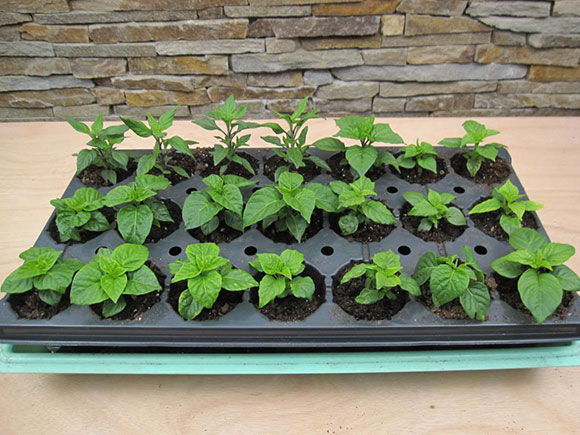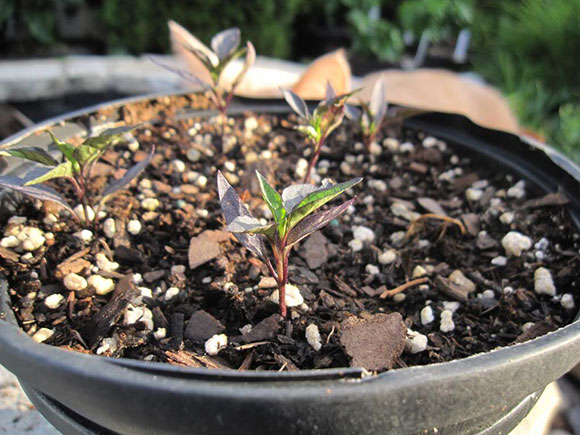January ushers in the deep winter when arctic winds howl and the temperatures plummet. Any day could bring a thick layer of snow. This is the season when our gardens sleep and gardeners dream of spring.
Perusing seed catalogs in print or online provides inspiration—it's hard to resist photos of juicy red tomatoes, giant colorful zinnias, or a rainbow of Swiss chard leaves. Growing plants from seed is fun and saves money—where else can you get dozens of plants for a few dollars? Many plants can be grown from seed indoors while others, such as carrots and beans, are sown directly in the garden.

Get Started
To grow seeds indoors, you'll need a few bags of seed-starting or soilless potting mix, available at local garden centers. Don’t opt for bags of inexpensive, heavy garden soil, which can harbor diseases that attack seedlings.
You’ll need a few containers—a seed-sowing flat with individual planting cells, or plastic, ceramic, or clay pots—even a clean milk carton will do. Punch a few small holes in the bottom, fill it with potting mix to a half-inch below the rim, and place a tray underneath to catch the water.
First, moisten the potting mix so it's slightly damp and place it in the pots or flats. Study the seed packet instructions for sowing depth. If the seeds are planted too deep, they won't sprout. Very fine seeds often need light to sprout. Lightly press them on surface of the potting mix and sprinkle a paper-thin layer of mix over them. Cover the pots loosely with a sheet of plastic wrap to keep the potting mix from drying out. After the seeds germinate, place them in a cool, bright, well-ventilated spot and remove the wrap altogether. Water tiny seedlings with a spray bottle or fill the saucer or tray below with water and let the potting mix soak it up. After an hour or so, empty standing water.
When there are too many seedlings in one pot, grab some scissors and snip off the weakest plants at the soil level. As they grow, seedlings will need to go into larger pots before heading outside. When transplanting, handle the plants by the leaves, not their delicate stems.
Timing
Seed packets and seed catalogs generally include information on whether the seeds can be started indoors, as well as seed spacing, planting depth, days to germination (sprouting), and days to maturity (when the first flowers or fruits form).
Some seedlings can’t be placed outdoors until after the last frost-free date. In the Chicago area, that date generally is May 15. If you start your seeds too early, you could end up with spindly plants on your windowsills. If a seed packet says to “sow seeds three to four weeks before the last spring frost date,” count backwards from May 15 and sow the seeds indoors around April 23. Some packets of tomato seeds suggest sowing them six to eight weeks before the last frost date, and the sowing date would be March 15 or April 1. Six to eight weeks is a long time to spend on a windowsill. In that case, consider growing seedlings under lights, which will create stockier plants.
Light and Warmth
Seedlings need light. A bright sunny window may suffice, but placing the pots under “grow lights” (available at garden centers, home improvement stores, and online) provides more consistent, even light. Supplemental light is helpful because winter sunlight is weak and there's always the chance of dull, cloudy days.
Some seeds, such as sweet peas, morning glories, cardinal climber vines, and nasturtiums have hard seed coats that slow germination. You can speed up the germination process by rubbing a nail file or sandpaper over the hard seed coat. Soaking the seeds for an hour or two will also soften the seed coat.
Once the warm weather arrives in May, move the potted seedlings outdoors for a few hours each day until it's time to transplant them in the garden. This is called "hardening off” and acclimates the still-tender seedlings to cool temperatures and stronger light. Place the pots in a spot that’s protected from wind and direct sunlight. Before long, your seedlings will fill borders, pots, window boxes, or the vegetable garden. And that’s a pleasant thought on a chilly winter day.

Nina Koziol is a garden writer and horticulturist who lives and gardens in Palos Park, Illinois.


